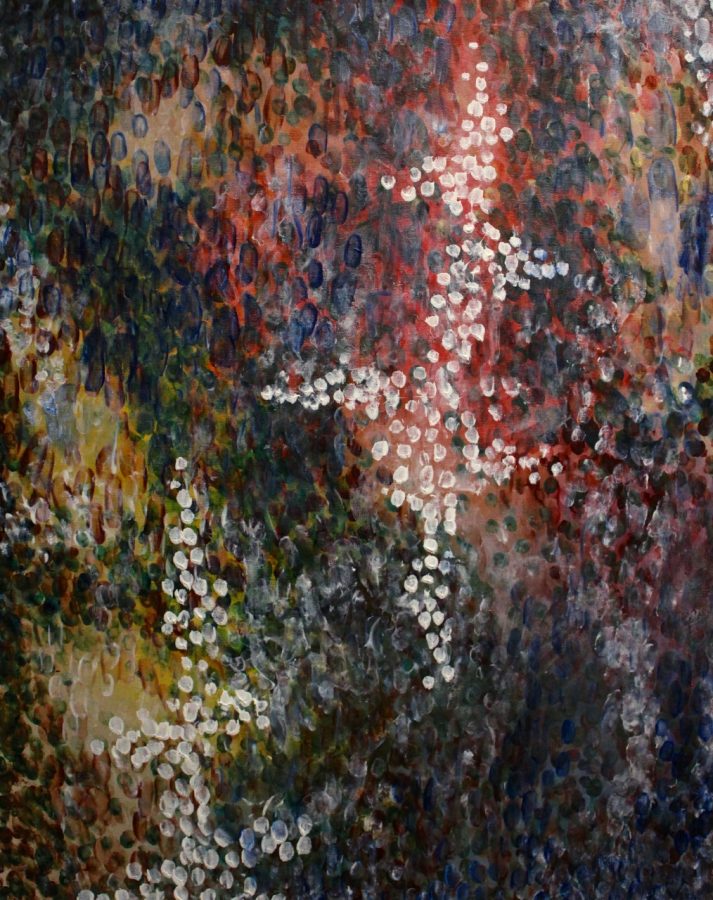Oftentimes when Sarah Washburn Thornton sits down to make art, there’s no motive, no intention, no plan. It’s automatic.
“[Automatic art is] when you don’t start with a plan to paint and instead you start with a blank piece of paper,” Thornton said. “It’s more about your body than the drawing you’ve produced. You’re not thinking about the final product, but you’re thinking about the process of making it. Some of it can be self-referential.”
Thornton is a senior studio arts major at Pitt who has made abstract paintings since high school, and her art is on display at the Frick Fine Arts Building. When she started at Pitt, Thornton was set on majoring in physics or astronomy — nothing close to the abstract acrylics work she does now. Science is an important part of Thornton’s art though, and sometimes it mixes with her automatic drawings.
She most recently hooked herself up to a heart rate monitor and as her heart rate slowed, she made a certain type of line and as her heart rate increased, she drew a different type of line. Automatic drawings are abstract and engage your body in making the work, and whatever happens is a record of what you did during that time, she said.
Thornton’s favorite work of her own is a series of journals that acts as her creative routine. It contains her responses to the 2016 election, collages, business cards that she’s collected, color samples, parking tickets, cutouts from magazines and kind text messages she printed out.
“[The journal is] not the biggest or the fanciest or even the best executed, but it is so long and so ongoing that it requires a lot of dedication,” Thornton said. “I’m really proud of that.”
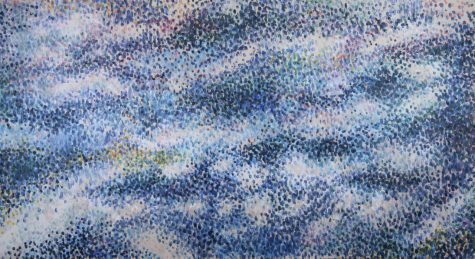
Each little mark in this painting is a fingerprint. Thornton’s inspiration for this artwork came from thinking about walking up the stairs in the dark and missing the top step. The world at first feels a bit unreal for a second, when reality becomes fuzzy. There is so much going on in this work even though viewers can’t see all of it. When you get up close to the painting, which hangs suspended from a wall in Frick, it waves a bit. If you get close enough, it fills your whole field of vision, and all the dots start to move in an otherworldly vibe. Thornton said the painting looks like a gateway, but viewers can interpret it however they want.
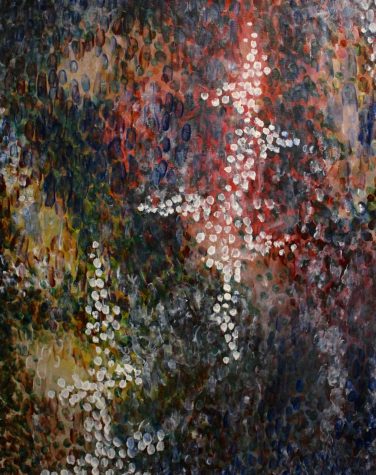
This is in acrylic. Thornton used her hands to paint instead of using a paintbrush because she thinks that the brush creates a barrier between the artist and the piece. With the rise of technology and communication, Thornton said certain degrees of removal have grown between people, and she wanted to mitigate that by not using a paintbrush.
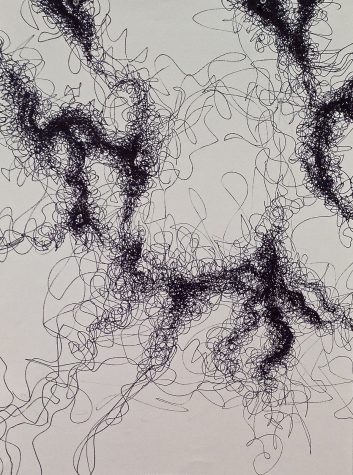
Thornton is interested in natural patterns of growth, cell division, galaxies and the dissemination of information. For this piece, she started with a picture of a sample, depicting cell growth in a dish, and later put down marks and played a video of cells multiplying. She mimicked this movement and turned the video off, finishing the rest of the growth on her own.
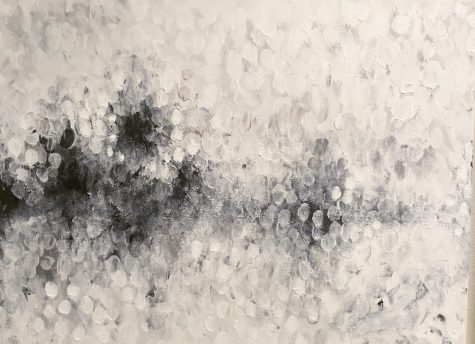
This looks like a painting in the Industrial Revolution — full of smoke, dust, smog, ships and edges of rivers. To her frustration, viewers kept interpreting this painting as inline with French impressionist works because of the way it was shaped and the cultural connotations of that shape. She thinks that people today glorify the white male past and that continuing to reference the Greeks and the Impressionists as the two main art movements denies other cultures, women and room for innovation.



